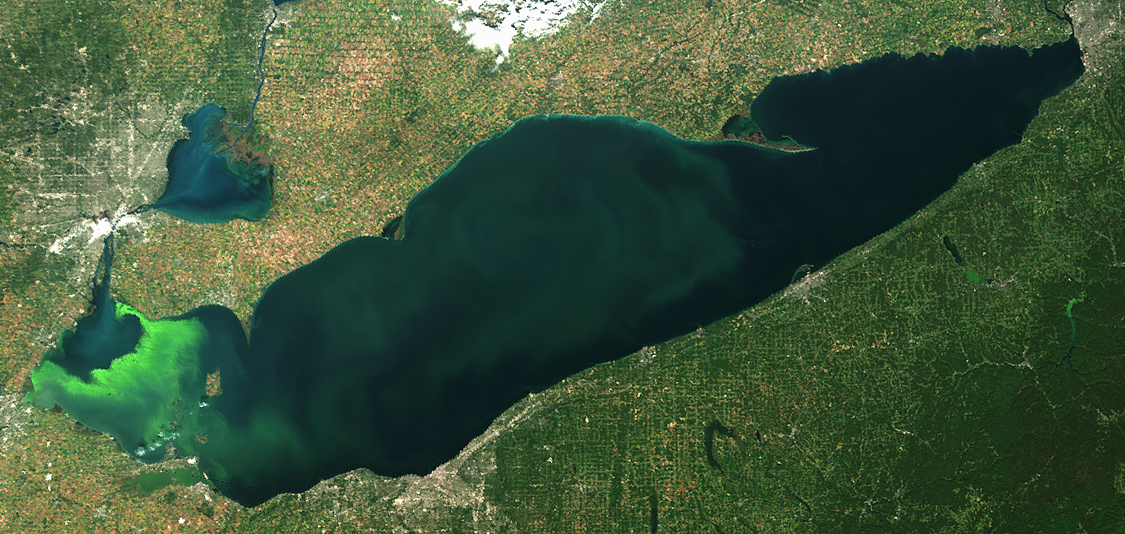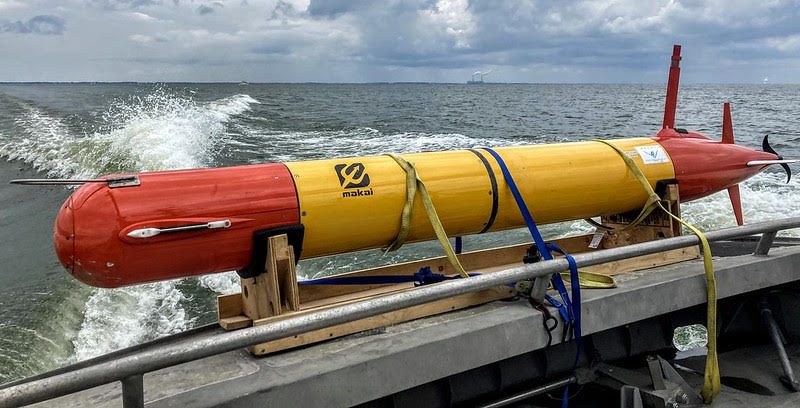New ecosystem model examines potential effects of Asian carp becoming established in Saginaw Bay, Lake Huron
New research by NOAA and partners finds that two species of invasive Asian carp — the bighead carp and silver carp, collectively known as bigheaded carps — could be capable of establishing populations in Saginaw Bay, Lake Huron and affecting the health of ecologically and economically important fish species such as yellow perch.
The research, appearing online in the journal Biological Invasions, is based on a new model that simulates interactions between the bigheaded carps and a range of fish species, including walleye, yellow perch, and groups lower on the food web over a time period of 50 years.
Over 180 non-indigenous aquatic species have already become established in the Great Lakes, with a handful of these producing substantial negative impacts. While bigheaded carps are established in watersheds near the Great Lakes, they have not yet become established in the Great Lakes. These plankton-feeding invasive fishes are considered a major threat to the Great Lakes because of their potential to disrupt food webs. NOAA is part of a multi-agency effort to reduce the risk of Asian carp invasion within the Great Lakes. The region is investing millions of dollars to prevent Asian carp from moving from the Mississippi River basin to the Great Lakes basin through the Chicago Area Waterway System.
In this study, a NOAA-led team of scientists developed a model to run computer simulations that examined how likely bigheaded carps are to establish in Saginaw Bay, Lake Huron, and their potential impacts on important fish species. The multi-species model considers bigheaded carps’ interactions with their predators and prey, bigheaded carps’ early life survival, and their ability to become established and impact walleye and yellow perch, valuable commercial and recreational fish species.
“Our research highlights the importance of understanding the first year survival of carp to better predict their future populations,” said Lori Ivan, Ph.D, the lead author and a former postdoctoral researcher at the University of Michigan Cooperative Institute for Great Lakes Research and currently a postdoctoral research associate at Michigan State University.
Estimates of bigheaded carp first year survival are unknown for the Great Lakes but are critical to predicting carp establishment success and food web impacts. When running the model under the scenario that the majority of bigheaded carps will have low survival during their first year of life, the authors found that they are unlikely to establish in the Saginaw Bay, Lake Huron and impact the food web. But under scenarios of high survival during their first year of life, many young bigheaded carps would survive and would likely establish and outcompete early life stages of yellow perch and other plankton-eating species. The impacts of bigheaded carps on the food web would increase as they become more abundant.
Water temperature affects carp survival
Factors in nature that could increase the survival of young bigheaded carp would include warm water temperatures, which increase consumption and growth by larval and juvenile carp, and shorten their window of vulnerability to predators, and high river flows, which keep carp eggs high up in the water column and transport them downstream to wetland nursery areas.
The model considered water temperature effects on carp consumption and growth, but did not simulate effects of river flow on survival of carp eggs and larvae. New research assessing the risk of Asian carp invasions will take this into account.
“We will be using this model framework across the Great Lakes watershed to improve our understanding of the potential risk of carp invasions to the Great Lakes,” said Doran Mason, Ph.D., a research ecologist at NOAA’s Great Lakes Environmental Research Laboratory and co-author of the study.
This work is supported by the U.S. Environmental Protection Agency Great Lakes Restoration Initiative.
Resources:
Asian Carp Regional Coordinating Committee: up-to-date information on ongoing efforts to prevent Asian carp from becoming established in the Great Lakes and beyond.
For more information, please contact Margaret Lansing, Chief of Information Services at NOAA's Great Lakes Environmental Research Laboratory, at margaret.lansing@noaa.gov or 734-395-7026, or Monica Allen, NOAA Communications, at monica.allen@noaa.gov or 202-379-6693.



